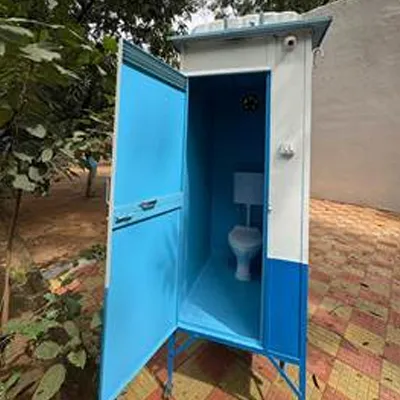On June 28, Knight Frank, a leading International Property Consultancy, and Khaitan & Co, one of India’s largest law firms, released its latest research report – 2021: A New Era for Rental Real Estate in India. The report highlights that this Act has far-reaching implications for both the residential and commercial real estate asset classes and will help create a three-tiered regulatory ecosystem for stakeholders. From a residential standpoint, the report cites that India’s high vacant stock of total residential census houses can be brought within the fold of formal rental housing once this Act is implemented by states and union territories in letter and spirit.
Source: Census of India, 2011, Knight Frank Research
With this policy push, urban India’s 21.72 million rented households provide a huge market opportunity for market participants to focus on housing projects solely for rental purposes. 76.5% or 16.63 million of these urban rented households in India is spread across eight states and Union Territories. The high percentage share of the total rented households in urban India can be attributed mainly to key urban employment hubs in Chennai, Hyderabad, Mumbai, Pune, Bengaluru, Ahmedabad, Kolkata, and the National Capital Region (NCR).
1. Census of India, 2011
2. Census of India, 2011
STATES WITH THE HIGHEST PERCENTAGE SHARE OF RENTED HOUSEHOLDS IN INDIA
States and Union Territories | Percentage share in the total rented households in India |
Tamil Nadu | 16.5% |
Andhra Pradesh | 13.8% |
Maharashtra | 13.5% |
Karnataka | 11.3% |
Gujarat | 6.1% |
West Bengal | 5.9% |
Uttar Pradesh | 5.1% |
NCT of Delhi | 4.3% |
Source: Knight Frank Research, Census 2021 | Census of India, 2011
The Union Cabinet, in June 2021, approved The Model Tenancy Act, 2021 for circulation to all states and UTs for adaption by way of enacting new legislation or amending the existing rentals laws. The objective of the research report is to lay down the opportunities and challenges in the rental housing market.
By putting down the ground rules of tenancy in black and white, the Model Tenancy Act, 2021 aims to create an effective regulatory ecosystem in India to govern landlord-tenant relationships. The relationship between landlord-tenants has been tainted due to trust issues in the past as there was no uniform rental housing law in the country. Despite many states adopting the Rent Control Act in the past, there was a need for a dispute resolution mechanism as tenancy laws in India are popularly perceived as ‘pro-tenant’. The absence of a regulatory framework to demarcate the rights and obligations of both parties has always resulted in long-drawn legal battles.
Commenting on the development, Shishir Baijal, Chairman & Managing Director, Knight Frank India said, “As most of the populations in top eight cities lives in informal rental housing accommodation, concerning the new Act, it will provide a huge opportunity for private housing operators and institutional investors in the organized rental housing market. Once the Act is implemented across the country, India may be ready to introduce rental housing models such as Build-To-Rent and Rent-to-Own. The Model Tenancy Act, 2021 will go a long way in the history of Indian real estate to create an efficient and transparent rental housing marketplace over the long haul.”
Sudip Mullick, Partner, Khaitan & Co said, “The Act deals with both residential and commercial property. The framework brings in an intention and promise to give impetus to boosting investment in both these sectors and balances the rights and obligations of the stakeholders including speedy relief in case of disputes. However certain provisions need to be relooked and the contractual rights of the parties should not be regulated, as such regulations will be frowned upon by the investors who would look to return on their investment. Investor sentiments and return on investment is quintessential for the development and growth of both the sectors in turn leading to development and employment.”
-
Key features of the Model Tenancy Act:
Creation of a three-tier redressal system: The Act will introduce Rent Authorities, Rent Court and Rent Tribunals. These regulatory institutions will reduce the burden of tenancy disputes from the civil courts and help in speedy dispute resolution. -
Security deposit demand capped: The Act places a limit to the security deposit, that is to be paid by a tenant in advance to - a) not exceed two months’ rent in case of residential premises, and b) not exceed six months’ rent in case of non-residential premises.
-
Rights and obligation of landlords and tenants: The do’s and don’ts of each party (landlords and tenants) are clearly defined, covering various aspects including retention of original tenancy agreements, rents and other charges payable, repair and maintenance of the property, entry into premises, besides information and duties of a property manager and consequences of violation of necessary duties.
-
Eviction of tenants and recovery of possession of premises by the landlord: In the past, rent control acts of various states such as the Delhi Rent Control Act and Maharashtra Rent Control Act provided grounds for eviction that were highly disputed in the court of law. This often led to protracted litigation. By limiting the grounds for eviction and termination of tenancies, this Act seeks to bring a consistent approach towards addressing these issues at the ground level.
-
Role of property managers: The Model Tenancy Act, 2021 clearly defines the role of property managers, their duties and the consequence they face in case of any violations. The Act will require property managers to furnish details such as name, PAN number, Aadhar number, address and contact details registered with the Rent Authorities. Any individual or a legal entity, including the rental agent who acts on behalf of the landlord to manage the premises and represents him in dealings with the tenant, will be included here. This Act will provide more opportunities for property managers going forward, especially in the residential sector.
Some challenges in the implementation of the Model Tenancy Act, 2021:
- Meaning of ‘Premises’: The Act defines a premise as a building or a part of a building intended to be given out on rent, except a hotel, lodging or property in industrial use. States where the Rent Control Act is in place and where urban dwellings like slums/chawls were previously covered, may have to define it clearly under their state level laws to provide protection to both tenants and landlords.
-
Non-applicability for certain type of premises: The Model Tenancy Act, 2021 has largely kept properties owned by Central/State government, Union Territory administration, local authorities, government enterprises; any property owned by some religious or charitable institutes, away from its purview. This will keep a large inventory of leasable properties away from the regulatory framework.
-
Force Majeure - Since the Act deals with both commercial and residential, it would be better to address both types of transactions under the force majeure clause. Merely stating what would constitute Force Majeure and linking the same with habitability only may not help the stakeholders.
-
Digital platforms creation by the rent authority: In the digital age, availability of information in real-time is instrumental for informed decision making. For a robust digital infrastructure, a central database can be created which can be managed by States and UTs which can be a holistic way to retrieve or store tenancy related information. This database can also be enhanced to include additional information about landlords and tenants’ past tenancy history, which can be an important quality indicator for future use for interested parties.
Some of the other issues include the time period required for on-ground implementation of The Model Tenancy Act, 2021 by all states and UTs across the country. Since real estate is a state subject, for states where old Rent laws have to be repealed or amended, it may take even longer. There may be a few states which may not implement the Act at all.




















